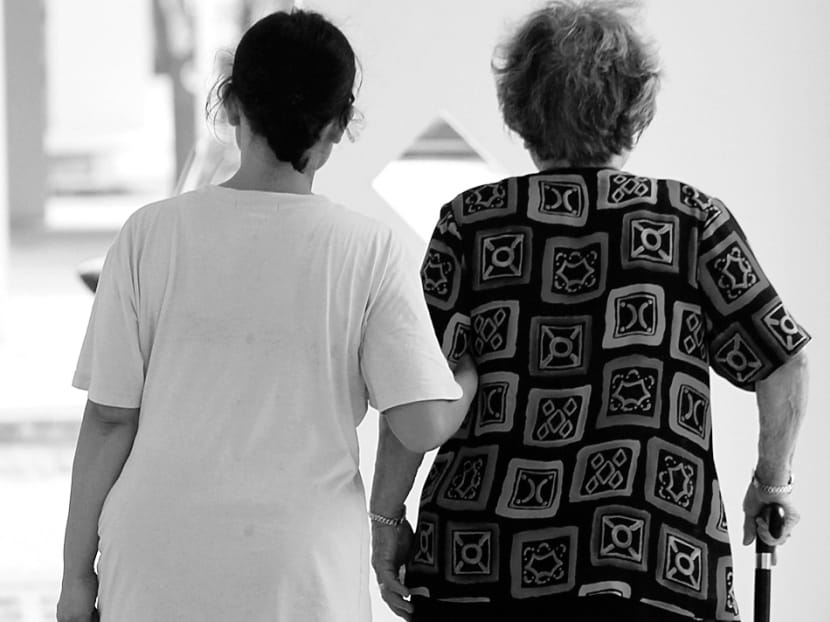Pioneer package — why the basics matter
A historical milestone was reached when Prime Minister Lee Hsien Loong outlined the Pioneer Generation Package last weekend. This is most significant, coming at the start of the celebrations for the 50th anniversary of the founding of modern Singapore.
A historical milestone was reached when Prime Minister Lee Hsien Loong outlined the Pioneer Generation Package last weekend. This is most significant, coming at the start of the celebrations for the 50th anniversary of the founding of modern Singapore.
It is well-received on both socio-cultural and economic grounds —expressing filial piety and respectful care for our elders, and enabling them to reap their well-deserved returns from earlier sacrifices and investments for our young nation.
A major part of the package is necessary to support the introduction of the new MediShield Life scheme in 2015. As this will be a compulsory and universal social insurance plan to cover catastrophic or high-cost illnesses for the entire population from birth to death, including those with pre-existing diseases, the total costs will be borne by everyone, but the premiums will have to be affordable to the elderly and the low-income.
Thus, the Pioneer Generation Package aims to enable older citizens aged 65 years and above to receive healthcare benefits and protection through the 3M healthcare financing system (Medisave, MediShield and Medifund) — including the new MediShield Life, subsidised government health services and the Community Health Assist Scheme for the low-income.
SAVINGS NOT ENOUGH
Prior to the implementation of compulsory savings through the Central Provident Fund (CPF) and introduction of Medisave in 1984, the generations who were born before 1950 and who had started working before the founding of Singapore in 1965 would not have built up enough savings.
These pioneers would not have enough in their CPF or Medisave accounts to pay for the rising costs of medical care that future generations with higher savings are able to bear, without depending on family support and greater transfers of government monies or public assistance.
An increasing number will be elderly women, who are widowed or single, who do not have the earning and saving capacities of their younger and more educated cohorts.
Surveys and feedback have pinpointed the key issues of our ageing population concerning income security and health problems. The elderly are worried about healthcare affordability and they desire greater social assurance for peace of mind.
However, this is often misunderstood as calling for increased welfare handouts and healthcare spending that may be unsustainable. Government policies in the past have been more cautious and less generous in providing social services and public assistance.
Nonetheless, the growing numbers of seniors are now exerting greater pressures on public health services and public finances. The elderly are demanding more and higher-quality public services, including healthcare for chronic disease conditions that come with the ageing process.
A minority will incur huge medical expenditures, which stronger risk-pooling mechanisms such as catastrophic insurance could provide better financial protection for. However, the majority would need to make regular outpatient visits to family doctors and the occasional specialist referral.
Other than topping up Medisave balances to pay for their MediShield Life premiums, there must also be enough funds for these other recurrent healthcare expenditures such as consultations and medication, including cost-effective preventive care for selected screening and immunisations.
THREE BASIC QUESTIONS
In the design of universal health coverage for the population, at least three basic questions will have to be addressed: Who are covered, what to cover and how much will be covered in the plan?
The answer to the first question is all Singaporeans; but those who qualify as the pioneer generation will get more support.
The second question will continue to be asked as greater demands are made to extend the scope to cover more conditions and provide other forms of healthcare, such as social and long-term care. However, such extras must be based on evidence of cost-effectiveness when offered as more appropriate alternatives.
The third question is probably the most difficult to address as it is loaded with uncertainty and risks, including longer-term financial implications for sustainability and cost-sharing between stakeholders.
How much will be subsidised or charged and what is the balance of the healthcare costs to be shared?
Already, different groups, including the People’s Action Party Seniors Group and the Women’s Wing, have come up with more recommendations for extended benefits and coverage.
In the days ahead, there will be many more suggestions and lobbies when details are provided during the Budget debates. How much to give will depend not only on the merits of the justification and economic basis such as affordability. Setting any precedent for our pioneer generation will also set the stage for future generations to come. It is critical that we get it right from the start.
ABOUT THE AUTHOR:
Dr Phua Kai Hong teaches health and social policy at the Lee Kuan Yew School of Public Policy, National University of Singapore. He has consulted in health economics and financing to many governments and international agencies, including the World Bank and WHO.







